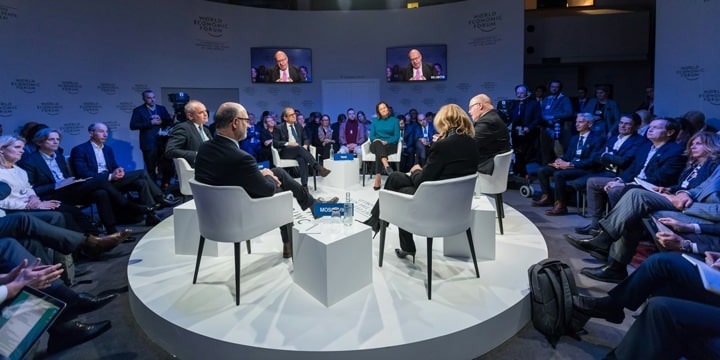
Image Source: Unsplash
In the ever-evolving landscape of remote work and hybrid collaboration, the technological juggernauts Samsung, Microsoft, and Cisco have orchestrated a ground-breaking alliance poised to reshape the very fabric of our meeting dynamics. With an unwavering commitment to eradicating the spatial constraints between meeting participants, these corporate behemoths are ushering in an era of cutting-edge video conferencing solutions that transcend convention. This article intricately navigates the collaborative synergy among Samsung, Microsoft, and Cisco, illuminates the features intrinsic to their revolutionary solutions, and dissects the profound impact on the future paradigm of hybrid meetings.
In recent epochs, a profound metamorphosis has coursed through the realms of work and collaboration. The ascendancy of remote work, coupled with an exigency for versatile collaboration tools, has precipitated an escalating demand for sophisticated video conferencing platforms. Cisco's revelation that a staggering 98% of meetings incorporate remote participants underscores an imperative for inclusive and immersive meeting experiences. To address this burgeoning need, Samsung, Microsoft, and Cisco have forged an alliance, sculpting innovative solutions to satiate the evolving appetites of modern collaboration.
A confluence of technological titans, Samsung, Microsoft, and Cisco, each boasting a distinct sphere of expertise, converges to birth a formidable suite of video collaboration solutions. This amalgamation spans the gamut of hardware, software, and avant-garde features, with a shared mission to elevate hybrid meetings into a realm of true immersion and inclusivity for every participant.
At the epicentre of this collaboration lies Cisco's Room Series, an intelligent video conferencing solution empowered by RoomOS. This hybrid work platform, meticulously tailored for an authentic Microsoft Teams experience, seamlessly integrates with third-party meetings. RoomOS beckons users into the fold of Teams meetings, Webex meetings, and various other video conferences without the need for labyrinthine configurations, forging a bridge between platforms.
Samsung's Smart Signage displays emerge as linchpins in crafting immersive meeting milieus. These high-resolution displays, including the illustrious 105-inch QPD-5K model, paint vibrant tapestries of colours and visuals. Sporting a panoramic 21:9 aspect ratio and 5K resolution, Samsung's displays transcend the mundane, imbuing participants with a sense of shared physical space. Whether in a control room, classroom, or meeting room, these displays are architected to augment collaboration and furnish an optimal viewing panorama for hybrid meetings.
Microsoft Teams, a paragon of collaborative platforms, assumes a central role in this triumvirate's orchestration. The fusion of Microsoft Teams with Cisco's Room Series and Samsung's Smart Signage displays forges a harmonious collaboration and a consistent meeting ambiance. The Front Row layout, bolstered by Microsoft Teams Rooms certified devices, optimizes the meeting layout, ensuring parity in engagement and presence for both remote and in-person attendees.
The collaborative ensemble birthed by Samsung, Microsoft, and Cisco is replete with an arsenal of features that elevate the meeting experience and streamline collaboration. Unveiling a few key facets of these solutions unravels a tapestry of innovation:
Samsung's Smart Signage displays, boasting 5K and 4K UHD resolutions, beckon participants into immersive vistas and visually arresting experiences. The resplendent colours and ultra-sleek design of these displays engineer a captivating ambiance for hybrid meetings, transcending the mundane and enhancing engagement and collaboration.
Artificial intelligence emerges as the linchpin in this collaboration, infusing intelligence into the solutions. AI-powered features encompass advanced camera capabilities, audio enhancement, and speech intelligence, ushering in crystal-clear communication and seamless collaboration. These intelligent features become sentinels, enabling participants to focus on meeting content and vanquish distractions, thereby elevating the overall meeting experience.
In the labyrinth of managing meeting spaces, Cisco Control Hub emerges as a guiding beacon, simplifying the management of spaces and devices. This, coupled with Microsoft's administrative prowess, streamlines the management of hybrid meeting environments, ensuring organizations can scale their initiatives with seamlessness.
The crucible of success for collaborative solutions lies in interoperability and integration. The partnership ensures a harmonious integration between Cisco Webex and Microsoft Teams, permitting users to seamlessly traverse meetings on either platform sans the shackles of complex configurations or application switching. This interoperability sets a new benchmark, simplifying the meeting experience for all participants.
The symbiotic partnership of Samsung, Microsoft, and Cisco emerges as an architect of the future of hybrid meetings. Their combined ingenuity births an ecosystem of collaborative solutions that genuflect to inclusivity, immersive experiences, and seamless integration. As the demand for flexible work environments burgeons, these solutions are poised to metamorphose the modus operandi of meetings, empowering organizations to embrace hybrid collaboration and embolden their teams to toil together effectively, irrespective of geographical confines.
As we navigate the uncharted waters of the remote work epoch and the undulating terrain of hybrid collaboration, the imperative for advanced video conferencing solutions burgeons. Samsung, Microsoft, and Cisco, standing at the vanguard of this transformation, are enabling organizations to adapt to the shifting work landscape. With their avant-garde solutions and unwavering dedication to seamless collaboration, these titans are scripting the narrative of how we connect and collaborate in the ensuing years.
In conclusion, the collaboration between Samsung, Microsoft, and Cisco represents a pivotal moment in the evolution of hybrid collaboration, as it seeks to redefine the landscape of remote work and meetings. The amalgamation of Samsung's Smart Signage displays, Microsoft Teams' collaborative prowess, and Cisco's Room Series with RoomOS forms a powerful triumvirate, offering an innovative suite of video conferencing solutions.






















